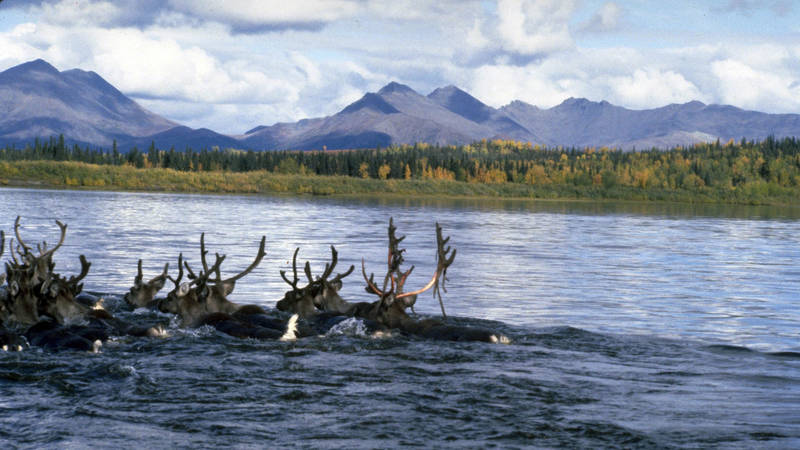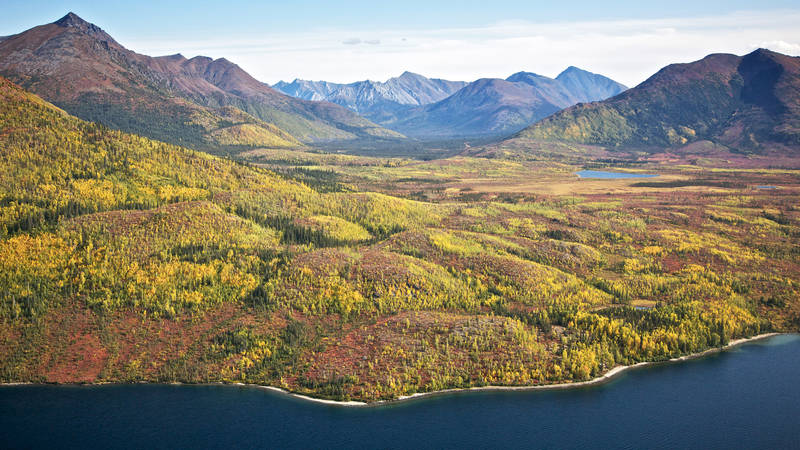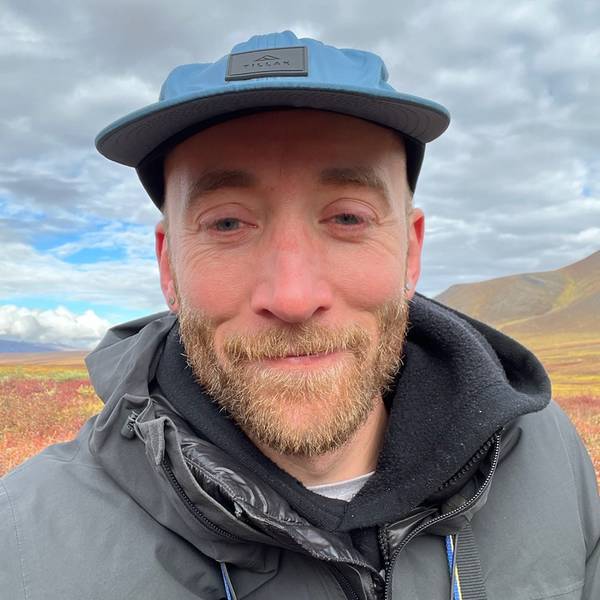Tireless advocates stepped up in 2024 to defend the Brooks Range and America’s largest intact park landscape from the Ambler mining road — and they won
After a long-fought campaign, Alaskans and national park advocates from across the country successfully blocked the proposed 211-mile Ambler mining road — twice this year. This industrial project would have sliced through the country’s largest intact national park landscape, disrupted caribou migration routes and threatened the subsistence lifestyle of 65+ Alaska Native Tribes.

Victory for 20 Million Acres of National Park Lands
The Biden administration protected America’s largest national park landscape by stopping a 211-mile industrial mining road that would have sliced through Gates of the Arctic National Preserve, disrupted caribou migration…
See more ›The last six months have been head-spinning as residents and supporters watched the project finally come to a halt, only to see it nearly revived in the waning days of Congress. As the Biden administration revoked the existing road permits this past summer, signaling a historic victory, park advocates learned that a bill had been introduced into the National Defense Authorization Act that would have reversed that win. Thanks to extensive advocacy by NPCA and our partners and allies, the provision was removed earlier this month, protecting 20 million acres of truly unique Alaskan parklands in the process.
This twofold victory is shared by a remarkable and diverse community of people who have led this fight for over a decade.
As Arctic and Interior Alaska Campaign Director for NPCA, it’s been an incredible honor to witness the people of the region, who have taken unimaginable lengths to pull off what many thought was impossible. Words are inadequate to describe the scale and size of the park landscapes of Northwest Alaska, including Gates of the Arctic National Park and Preserve, Kobuk Valley National Park, Noatak National Preserve, and Cape Krusenstern National Monument. So, too, is it impossible to explain the distances covered by the people fighting to keep this landscape intact from industrial mining threats.
Alaskans showed up and spoke out at 12 public comment periods held by the Bureau of Land Management across Alaska — including a meeting in Allakaket where agency staff and meeting attendees were snowed in and unable to travel for days. Many also traveled great distances from home for meetings with decision-makers in Anchorage and Washington, D.C. Some advocates even risked their lives flying in small planes in bad weather or snowmachining (what we Alaskans call snowmobiling) through blizzards and over frozen rivers that frequently crack, even in the winter. Alaskans fighting against this road proved time and again to be as resolute and strong as the lands and waters of the Brooks Range itself.
Members of the local Protect the Kobuk group traveled hundreds of miles by dogsled, snowmachine and small plane to speak in upriver communities about the project and to urge residents to sign a petition against it. That petition has nearly 700 supporters thanks to these intrepid advocates. Along with the petition, they dog mushed “No Road” signs that now line the windows and doorways of communities up and down the Kobuk River, whose headwaters were targeted by the Ambler mining district speculation. The Kobuk River was included in the American Rivers Most Endangered Rivers® of 2024 list because of Ambler Road’s threats.
One of this region’s most tireless defenders is Jayme Dittmar, a dog musher and filmmaker from Fairbanks, Alaska, who traveled with a small film crew several years ago along the entire proposed road route, paddling down the Koyukuk and Kobuk Rivers and taking several bush flights to complete the trip. Those travels turned into the documentary Paving Tundra, which does an incredible job of explaining the stakes of this project and the challenges the local people of the region face as they make decisions for their families, cultures and communities. Since producing the film, Jayme has put in many more thousands of miles traveling between communities in the interior of the state, where she lives, to Arctic Village and Kotzebue and all the way to DC, building power for the people whose histories and futures are inextricably tied to these parklands.
April Monroe is another remarkable advocate, a brilliant organizer and storyteller who bridged the thousands of miles between impacted villages such as Evansville and Tanana with D.C., in part by recruiting professional musicians like Portugal. The Man, Quinn Christopherson and Medium Build to share updates on the proposed project with their followers. Each of these artists flew to affected communities to hear from Alaskans and to share their stories across the country.

Alaskan advocate and storyteller April Monroe.
© Katie OrlinskyYoung Alaskans have stepped up, too, over the past few years, sharing their powerful truth to White House and congressional leaders that the stakes cannot be higher for their families and future generations. Jazmyn Vent, who grew up in Huslia and has family ties in Ambler, is a co-founder of the No Ambler Road group. Along with other young Alaskans, she traveled to D.C. twice this year, as well as to the World Wilderness Congress in Rapid City, South Dakota, and the International Indigenous Peoples’ Salmon Gathering in Norway, to share her undergraduate research on the Yukon salmon fishery collapse. Her findings indicate that people of Interior Alaska understand firsthand how the government has failed to protect their subsistence rights and culture in the face of numerous threats.
The list goes on of people carrying out heroic efforts to protect their homelands and the parklands they love.

Jazmyn Vent, cofounder of the No Ambler Road coalition
© Jayme DittmarKnowing these heroes, I also know that each of them would scoff at me or laugh off this title. If anything, Alaskans tend to think of themselves as normal people, trying to live the lives they’ve always known without being bothered by outside interests. People would much rather be hunting caribou or cutting fish, attending a potlatch or visiting with family. If they are going great distances, it’s to fill their freezers or haul their heating fuel or maybe if they have to, go to a medical appointment in the big city.
Alaska Native Tribal leaders have done what they need to do to keep their families and Tribes in one piece, as they have for generations. I’ve learned that it’s neither a job nor a term of service, it’s a central responsibility of being a part of a community of family and neighbors.
Even so, Tribal leaders and the many partners and allies of the Defend Brooks Range and No Ambler Road coalitions accomplished remarkable and heroic things in their efforts to protect their homes. They launched a national campaign that moved over 150,000 Americans to speak out against the road. They achieved several historic wins to stop the project, and they continue to push the Army Corps to revoke their Clean Water Act permits associated with the road. And they will continue to use their power to push back against any future federal attempts to destroy their wild homeland.
Perhaps it’s no coincidence that people outside of Alaska often find many of the things the people of the region do hard to imagine, like living without a car hundreds of miles from the nearest road, grocery store or hospital, or traveling days across the tundra or boating up a river to hunt caribou or moose to feed your family.

Protecting the Value of Wild Places
Alaska is home to some of the last untamed landscapes in the country — but a proposed mining road could forever slice through part of the Brooks Range and harm…
See more ›When you do what others think impossible every day, it really makes you learn to question what others deem to be true — for example, that the Brooks Range would be better off with a bunch of open pit copper mines, or that a private industrial road through one of the wildest landscapes left on Earth is good for the climate.
Our broad coalition knows that collectively we are powerful. We’ve seen what we can do when we lift up the knowledge and stories of the people of Northwest and Interior Alaska. They know better than anyone how to live well in the north country, and just like the caribou and salmon, that means covering great distances in the name of your home.
About the author
-
 Alex Johnson Campaign Director, Arctic and Interior Alaska, Alaska
Alex Johnson Campaign Director, Arctic and Interior Alaska, AlaskaAlex directs NPCA’s programs to protect and enhance the national parks and preserves in Alaska.
-
General
-
- NPCA Region:
- Alaska
-
Issues

